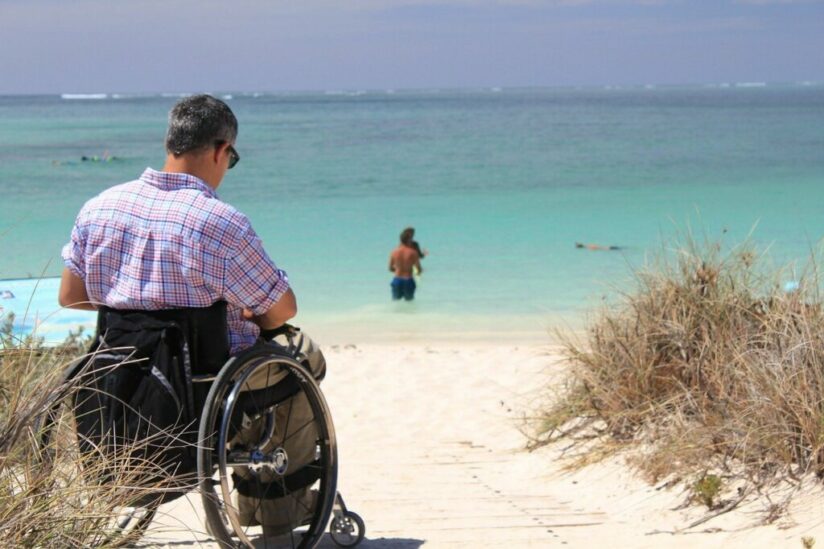3 Major Changes to Income Protection Insurance

It has been a while since we wrote about something as ‘every day’ as risk insurance – pandemics will do that to you! Today we will start to address that by examining some changes that are happening to income protection insurance. One of the main changes has already taken effect, with a couple of others slated for 2021. This article will discuss the change that has already taken place and we will publish a couple of articles in November discussing the changes that are yet to come.
Income Protection Insurance – a Recap
As the name suggests, income protection (‘IP’) insurance allows you to protect your personal income if you become sick or injured and cannot keep working as a result.
IP insurance usually only relates to income that comes from your labour – generally known as ‘personal exertion’ income. Personal exertion income is the wages, salary or business revenue that is lost if you cannot physically work. The alternative form of income is usually called ‘passive’ income. This is income generated from assets which do not require active management, such as listed shares or interest on bank accounts is typically not insurable. There is generally no need to insure this income, however, because it should not stop just because you are unwell and cannot work.
If you or someone else would suffer financially if you are unable to keep working, you should strongly consider IP insurance. Premiums are often tax deductible, so it is important to arrange type of insurance properly. If you do not have IP, or you think your IP needs a review, please contact us immediately.
APRA’s Review of Income Protection Insurance
The main regulator of risk insurance is the Australian Prudential Regulation Authority (‘APRA’). Over the last couple of years, APRA has reviewed the way in which IP insurance is provided by insurers. The review has been largely in response to changes in how people work and how they sometimes become injured or ill. APRA’s review has led to a number of changes which were recently discussed and summarized in a letter from APRA to life insurers on September 30 2020.
A key thing to remember about these changes is that they are prospective – that is, they impact on new policies being taken out after the various key dates that relate to them. Policies that were in place before the dates in APRA’s announcement remain unchanged.
APRA’s announcement sets out a number of changes and the dates on which these changes take effect. For one of the changes, the key date has already passed. We discuss that change in this article. Other changes will take effect in 2021 and we will discuss those changes in future articles.
Change #1 – No More ‘Agreed Value’ Policies. It’s all About Indemnity.
A key question when taking out IP cover is also a simple one: how much income should I insure? The amount of income you insure relates directly to the benefits you will receive if you make a claim.
Traditionally, there were two ways to decide for how much to insure. These two ways gave rise to two broad types of policy: agreed value and indemnity. Under both types of policy, the amount of insured income was established when the policy was first written. However, in an agreed value policy, the insurer checked the actual income of the policy holder at the time the policy was taken out. So, if you insured yourself for $100,000, the insurer would confirm that you actually had an income of at least this much when you took out the cover.
Agreed value policies often suited people with variable incomes, such as consultants or casual workers whose income may fluctuate across time. People sometimes took this kind of policy out when their income was relatively high and this relatively high income remained what they were insured for in future years. In practice, this sometimes meant that insurance benefits paid on an eventual claim replaced more income than the person had actually lost when they became ill or injured.
Alternatively, under an indemnity policy, the insurer does not confirm the insured level of income when a policy is first established. The insurer only confirms actual lost income if a claim is eventually made. This actual lost income then determines how much benefit was paid.
As of March 2020, new policies are effectively all indemnity policies. This means that the amount that the insurer pays will be ‘pegged’ to the actual income being earned at the time of the claim. Amongst other things, this means it will no longer make sense to insure yourself for more than you are actually earning.
The premium paid for an IP policy is directly related to how much income is being insured. The higher the sum insured, the higher the premium (other factors affect the premium as well, but higher income always increases the premium). So, by moving to indemnity-type policies only, the system will discourage people from over-insuring themselves: if you insure for an amount higher than you actually earn, the ‘excess’ premium is simply wasted because you will only be paid based on what you actually earn.
In most cases, if a claim is made the income compensated for will be assessed over the 12 months prior to the claim. This time period can be varied if a person’s income for a given level of work really does vary from year to year – think, for example, of farmers whose income might vary according to grain prices, etc, even though the amount of work might not change from year to year. It would be unfair to assess such a person’s income in a year when grain prices were unusually low and then ‘lock’ those prices into the benefits paid over all future years.
The key date here was March 31 2020. Agreed value policies written before that date can remain in operation. Policies written after that date are now all effectively indemnity policies. Policies that pre-date March 31 2020 remain in place with all the terms and conditions that they had when they were established. APRA’s review has led to changes to new policies, not pre-existing ones.
So, if you have an agreed value policy, it is probably worth hanging on to it – but talk to us, as always, before you do anything to change your insurances.
Change #2 – Limits on the Size of Payments in the Medium to Long-Term.
APRA has stated that it expects future IP policies to meet the following criteria (quoted from APRA’s September 30 letter):
- Insurance benefits, taking account of all benefits paid under the IDII [IP] product, do not exceed 90 per cent of earnings at time of claim for the first six months of the claim and do not exceed 70 per cent of earnings thereafter;
- Indexation of benefit payments (before income offsets are taken into account) to the claimant throughout the claim duration should be limited to a suitable inflation index;
- Payments to third parties to support return to work initiatives focused on rehabilitation and retraining (to the extent that it is possible under current legislation) may be made in addition to the above income replacement limits; and
- Where superannuation contributions are excluded from income at risk, any insurance benefits related to these contributions can be paid in addition to the above income replacement limits. In all instances, insurance benefits related to superannuation contributions should be paid into a superannuation fund and not to the claimant.
This series of criteria for benefit payments continues the theme that a person will no longer be able to insure themselves for more than the amount of income they actually lose. It is hoped that this will give an incentive to people to return to work (and stop receiving benefits) wherever possible.
In the first six months of a claim, any benefit payment is to be ‘capped’ at no more than 90% of the actual income lost. After that, the cap falls to no more than 70% of the amount of income lost. So, the changes effectively limit the amount of income that can be paid. In concert with the move to indemnity-type policies only, which we discussed on October 30 2020, the total effect of the change is that claimants receiving long-term benefits will now receive no more than 70% of their actual income immediately prior to becoming unwell and unable to work.
In some cases, this will be a reduction from the figure generally (although not always) used before the changes, which was 75% of actual income lost.
Payments made over an extended period of time will still be eligible for indexation. Indexation is where future payments are adjusted for changes in the purchasing power of a dollar. For example, if inflation reduces the purchasing power of a dollar, then indexation would see claimants receive more dollars to ensure that their purchasing power stays constant.
APRA is requiring that a standard measure of inflation be used as the basis for this indexation. This is likely to at least include the Consumer Price Index (‘CPI’) will be that measure. The CPI is calculated by the Australian Bureau of Statistics and is the most widely-recognised inflation measure in our economy.
Timing of These Changes
The key date for the change described above is 1 October 2021.
Please note that the suggested changes will not apply retrospectively. Existing policies with other conditions (for example, that pay out up to 75% of lost income) remain in place.
It goes without saying that changing policies at the moment is something to be done with the utmost care. Similarly, if you are looking for a new policy, then timing the commencement of that policy is also crucial. So, if you or someone you love is contemplating new or changed IP insurance, please do not hesitate to get in touch.
Change #3 – How Long the Policy Lasts Without Being Reviewed
An initial income protection insurance policy sets out all of the terms and conditions for that policy. Traditionally, those initial terms and conditions then stayed in place for as long as the policy continued. Policies could continue largely unchanged from the time they were established until the policy holder retired – as long as the policy holder continued to pay the premiums. So, for example, a person aged 25 could take out an IP policy with terms and conditions that might last thirty or forty years – as long as that person kept paying their annual premium.
This practice is known as ‘guaranteed renewability.’ As long as the policy holder paid the premium, they were guaranteed a renewal of the policy using the original terms and conditions.
This will alter – to some extent – due to changes announced in APRA’s September 30 letter. Once these changes take effect, new policies will only be renewable on the initial terms for a period of up to five years. At the five-year mark, a new policy will effectively need to be created. That new policy can incorporate changes to the insured person’s personal circumstances (for example, a move from full time to part time work, or vice versa, or a change in personal financial circumstances). The new policy can also bring in new definitions of insured events.
Very importantly, however, the new policy cannot adjust for changes to a person’s health since the previous policy was established. This is a very important element of insurance, as many illnesses take time to get to the point where a person is unable to work. It would be entirely unfair if an insurer could adjust or decline a renewed policy based on information that has come to light since the original policy was taken out. In fact, it would largely negate the need for insurance.
Accordingly, once this change takes effect, that part of a policy that relates to health will continue to be guaranteed renewable. The other parts of a policy can be reviewed and revised when the five-year period expires.
Timing of These Changes
The key date for the change described above is 1 October 2021.
Please note that the suggested changes will not apply retrospectively. Existing policies with current conditions remain in place.
As we said last week, it goes without saying that changing IP policies at the moment should only be done with the utmost care. Similarly, if you are looking for a new policy, then timing the commencement of that policy is also crucial. So, if you or someone you know is contemplating new or changed IP insurance, please do not hesitate to get in touch.


